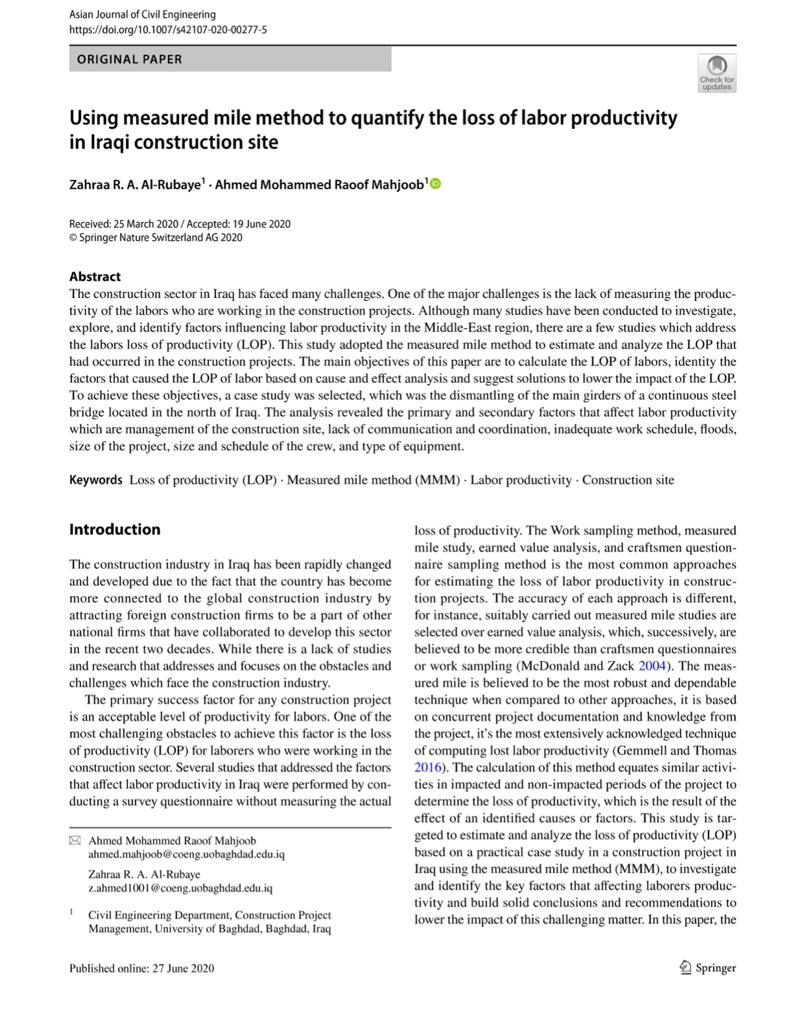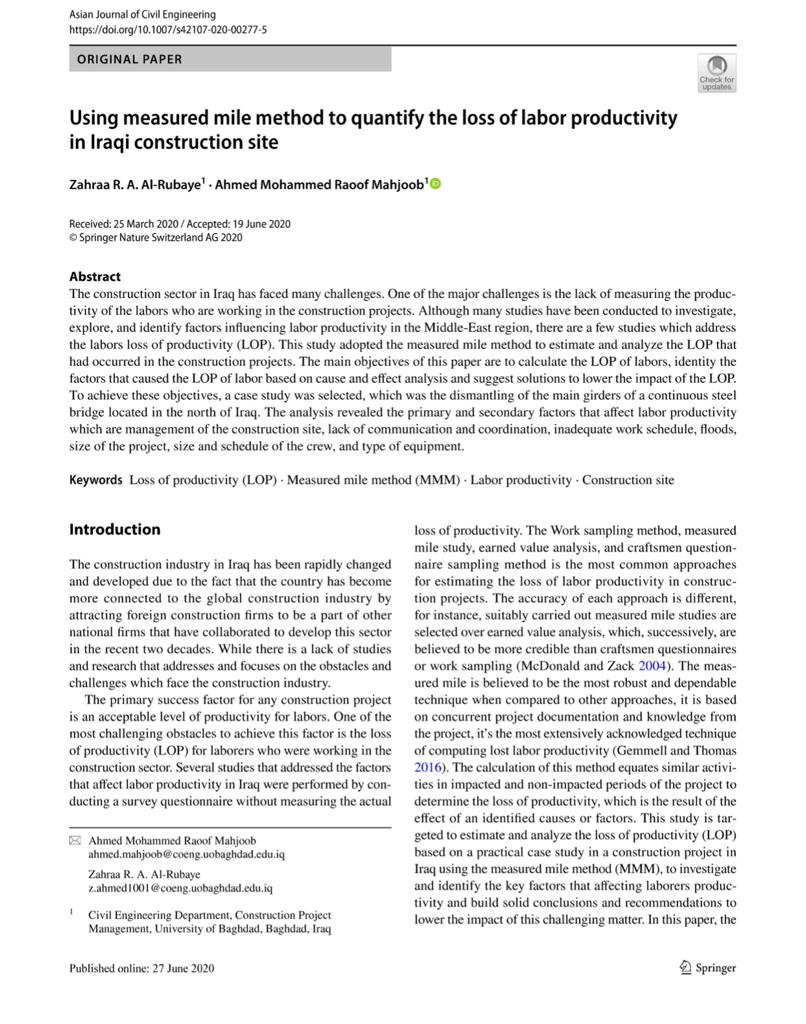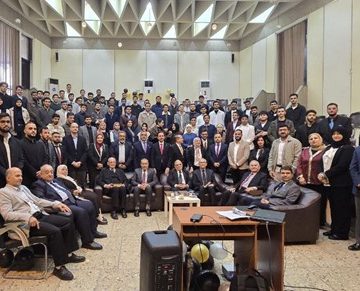نشر ا.م. د. أحمد محمد رؤوف التدريسي في قسم الهندسة المدنية و الباحثة زهراء رائد احمد بحثا بعنوان: استخدام طريقة الميل المقاسة لتحديد الخسارة الكمية في انتاجية العمالة لموقع انشائي في العراق
“Using measured mile method to quantify the loss of labor productivity in Iraqi construction site”
في مجلة الهندسة المدنية الاسيوية (Asian Journal of Civil Engineering)
ضمن دار النشر العالمية سبرنغر ((Springer Nature Switzerland AG
تناول الباحثان استخدام طريقة الميل المقاسة (MMM) لتقدير وتحليل خسارة الإنتاجية (LOP) بالاعتماد على بيانات حقيقة حيث تم حساب LOP للعمال ، وتحديد العوامل التي تسببت في LOP للعمالة استنادًا إلى تحليل السبب والنتيجة واقتراح حلول لتقليل تأثير LOP ولتحقيق هذه الأهداف ، تم اختيار دراسة حالة مشروع انشائي كبير وكشف التحليل عن العوامل الأولية والثانوية التي تؤثر على إنتاجية العمالة وهي إدارة موقع البناء ، ضعف التواصل والتنسيق بين اطراف المشروع ، وعدم كفاية جدول العمل ، والفيضانات ، وحجم المشروع ، وحجم الطاقم وجدوله الزمني ، ونوع المعدات المستخدمة.
ملخص البحث باللغة الانكليزية هو
The construction sector in Iraq has faced many challenges. One of the major challenges is the lack of measuring the productivity of the labors who are working in the construction projects. Although many studies have been conducted to investigate, explore, and identify factors influencing labor productivity in the Middle East region, there are a few studies which address the labors Loss of Productivity (LOP). This study adopted the Measured Mile Method (MMM) to estimate and analyze the loss of productivity (LOP) that had occurred in the construction projects. The main objectives of this paper are to calculate the LOP of labors, identity the factors that caused the LOP of labor based on cause and effect analysis and suggest solutions to lower the impact of the LOP. To achieve these objectives, a case study was selected, which was the dismantling of the main girders of a continuous steel bridge located in the north of Iraq. The analysis revealed the primary and secondary factors that affect labor productivity which are management of the construction site, lack of communication and coordination, inadequate work schedule, floods, size of the project, size and schedule of the crew, and type of equipment.
وللمزيد حول البحث من خلال الروابط ادناه:
https://link.springer.com/article/10.1007/s42107-020-00277-5
To see full text, visit the following link:









